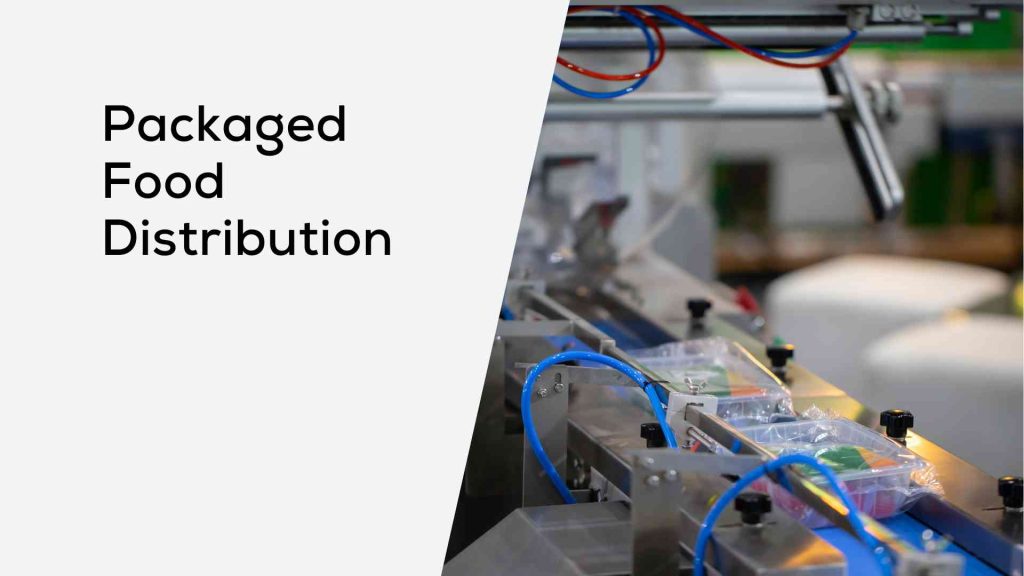Do you know? The U.S. packaged food market was valued at USD 1.029 trillion in 2021 and is expected to expand at a compound annual growth rate (CAGR) of 4.8% from 2022 to 2030. The growth of the U.S. is expected to be fueled by innovations in food packaging, plant-based products, bold flavors, and healthy ingredients over the next few years.
By the way, packaged food product distribution has always been a complex and dynamic industry, with various factors influencing its operations. In recent years, the landscape has seen significant changes driven by shifts in consumer preferences, technological advancements, and global events. This article delves into some of the latest key challenges faced by businesses engaged in packaged food distribution and discusses potential strategies to overcome them.
Supply Chain Disruptions
Recently, the pandemic exposed vulnerabilities in supply chains worldwide, and the packaged food distribution sector was no exception. Lockdowns, travel restrictions, and workforce shortages disrupted the production and transportation of food products. To mitigate such disruptions, businesses must consider diversifying their supplier base, improving inventory management, and investing in robust demand forecasting systems.
Evolving Consumer Preferences
Well, Consumers are becoming increasingly health-conscious nowadays, demanding more organic, natural, and sustainable food options. Meeting these preferences while maintaining cost-effectiveness can be challenging. To address this, companies should focus on product innovation, sustainable sourcing, and transparent labeling to meet changing consumer expectations.
Environmental Concerns
Sustainability is a growing concern in the packaged food industry. Enterprises are under pressure to reduce their carbon footprint, minimize waste, and adopt eco-friendly packaging solutions. Embracing sustainable practices addresses environmental concerns and resonates with consumers who prioritize green products.
E-commerce and Last-Mile Delivery
The rise of e-commerce has transformed the distribution landscape. Meeting the demands of online shoppers, especially in the last-mile delivery sector, can be challenging. Companies must optimize their supply chain processes, invest in efficient last-mile delivery options, and provide a seamless online shopping experience to remain competitive.
Regulatory Compliance
Food safety regulations constantly evolve, and non-compliance can result in significant fines and reputational damage. Staying up-to-date with these regulations and ensuring strict compliance throughout the supply chain is crucial. This includes proper labeling, traceability, and compliance to hygiene and quality standards.
Data Security and Technology Integration
Integrating advanced technologies such as IoT (Internet of Things) and blockchain for supply chain transparency has become essential. However, this also raises concerns about data security and privacy. Businesses must invest in robust cybersecurity measures and ensure data protection while reaping the benefits of technological advancements.
Labor Shortages and Workforce Management
Finding and retaining skilled workers in the food distribution sector can be a challenge, particularly for roles that involve manual labor. Companies should invest in employee training, offer competitive wages, and consider automation solutions to mitigate labor shortages.
In the ever-evolving world of packaged food product distribution, businesses must be adaptable and forward-thinking to overcome the latest challenges. By addressing issues related to supply chain disruptions, evolving consumer preferences, sustainability, e-commerce, regulatory compliance, technology integration, labor shortages, and more, companies can position themselves for success.
Proactive strategies, innovation, and a commitment to meeting customer demands are key to thriving in this competitive industry while delivering high-quality and safe food products to consumers.
How can Acumatica help?
Acumatica cloud ERP emerges as a transformative solution for packaged food product distribution, offering an integrated platform that addresses the multifaceted challenges of the industry.
With real-time visibility into inventory, streamlined supply chain management, precise demand forecasting, and compliance with ever-evolving regulations, Acumatica empowers businesses to optimize their operations, reduce costs, ensure food safety, and efficiently meet the demands of discerning consumers.
Moreover, its cloud-based flexibility facilitates remote access and scalability, making it an indispensable tool for enhancing packaged food distribution businesses’ efficiency, transparency, and overall competitiveness in today’s dynamic market landscape. I hope this article helps you. Are you in the distribution business? Contact us for a customized ERP.

Sangeetha brings 20 years of experience in Information Technology which includes Solution architecting, building micro services, research, and evaluation of business applications, integrating apps.

